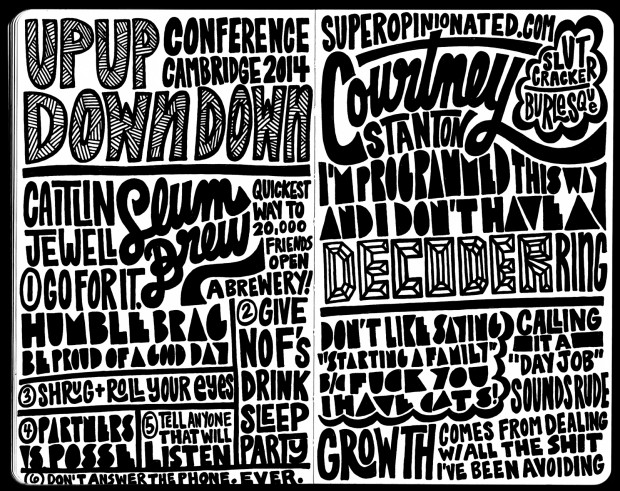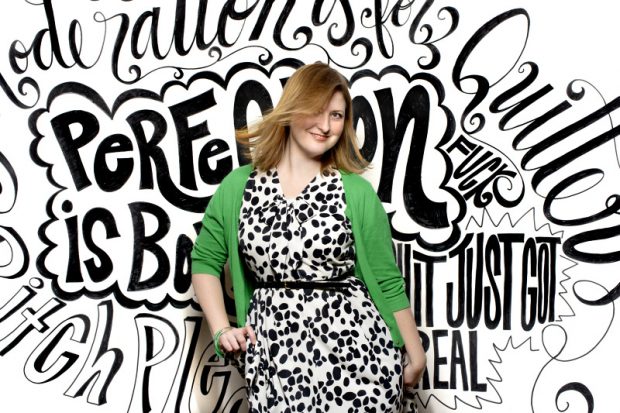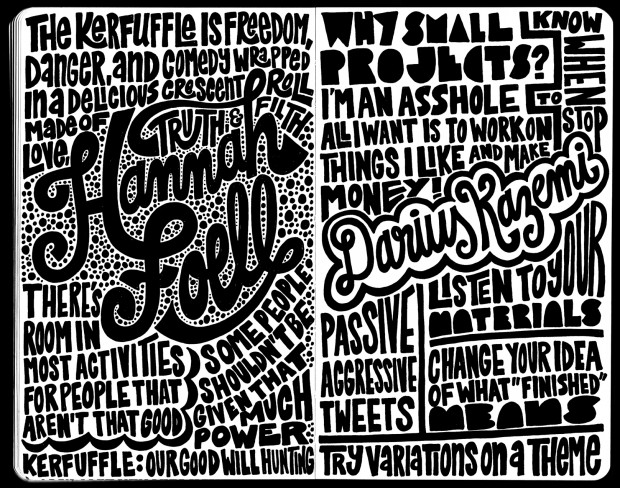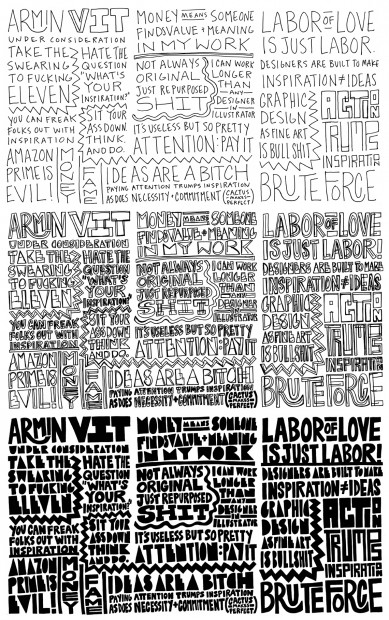
Artists and designers are typically great visual notetakers.
Some jot images, while others capture important talking points. Carolyn Sewell is one of those people who has elevated her visual notes into a form of art. Her quick-thinking, mark-making skills are not for the faint of heart—it takes skill and focus. Here, she talks about her note-taking process and the evolution of her craft.

Q. Have you always been a visual note-taker? i.e., even before you became an illustrator?
Carolyn: “I’ve always had a terrible memory, so at a young age I started sketching notes and doodles in my books to help me visualize the information.”
“I doubt I would’ve graduated high school or college, without this technique. And since my memory hasn’t improved, I continue to take visual notes at design lectures and conferences. There’s just something about hearing, processing, and drawing the content that cements it to my memory. The pen is my hearing aid. I can’t listen without it!”
Q. Do you have a certain thought-process when you’re doing this, as far as placement of letters on the pages?
Carolyn: “My ‘process’ is pretty loose. I actually don’t like to be too prepared, as I get too much into my head and overthink the placement. I like to jump right in. However, I find it helpful to draw the speaker’s name and talk title while I’m waiting for them to begin, as it gives me a jumping off point. If I’m at a conference, I try not to start every spread with the speaker name in the top left page, but instead, force myself to put their name in the middle, across both spreads, or sideways, just to keep it interesting.”
“I’m not much for negative space, so if I still have some page to fill, I’ll go back over Twitter and see if I missed anything. I also like to wait and add the date/venue to the end, because they’re good things to squeeze into small spaces.”

Q. How do you know what sound-bites to grab and write down?
Carolyn: “I have a long habit of jotting down funny things my friends and family say (to then use later in postcards, t-shirts, etc.), so I think I’ve trained my ear to listen for those little nuggets of insight. Also, shorter phrases are easier to capture. Some speakers talk in long stories and timelines, which are fascinating in their own right, but not exactly quotable.”
“Then there are others that spew so many amazing soundbites that my hand hurts from trying to get them all down. Stefan Sagmeister is one of those speakers. It’s exhausting trying to keep up with him. Also, if you say the word Fuck, I will write it down. Every. Time.”
Q. I imagine by now, you’re fairly quick, but the lettering is so elaborate … how did you train yourself to do this so quickly, or do you go back and tweak your notes after the fact?
Carolyn: “Oh gosh, I wish I was quick. I mean, yes, I jot down the actual notes very quickly (I have to), but they’re in a skeletal form at that point. While at the talk, I don’t have time to focus on the visual details, I have to get the content on the page, and quickly. Granted, I’ve been doing this long enough, so I’ve learned a few tricks and can stretch or squeeze a phrase to make it fit. But the real key is to leave plenty of space around each word, giving you more options when you start shaping/filling in the letterforms.”
“It’s once I get home that I start adding meat to the bones. It’s a three-step process: I have the skeletal notes that I take live at the event; then I outline the notes, start to give them structure and depth; and, finally I fill in everything with ink (which is the most satisfying step). Below is a picture of my notes from Armin Vit’s talk, showing my step-by-step process.”

Q. What tools do you typically use? Are you doing this in a sketchbook?
Carolyn: “I use two tools: A Moleskin Sketchbook (the paper is very thick, keeping my ink from bleeding through), and a Uni-ball Signo Impact 207 pen in black ink (1.0mm because I like really thick, dark ink).
If you want to learn how to become a pro at visual note-taking and start creating amazing works of art like Carolyn, get started with our class on Visual Note-Taking: A Beginner’s Guide to Sketchnotes right here on CreativeLive.


